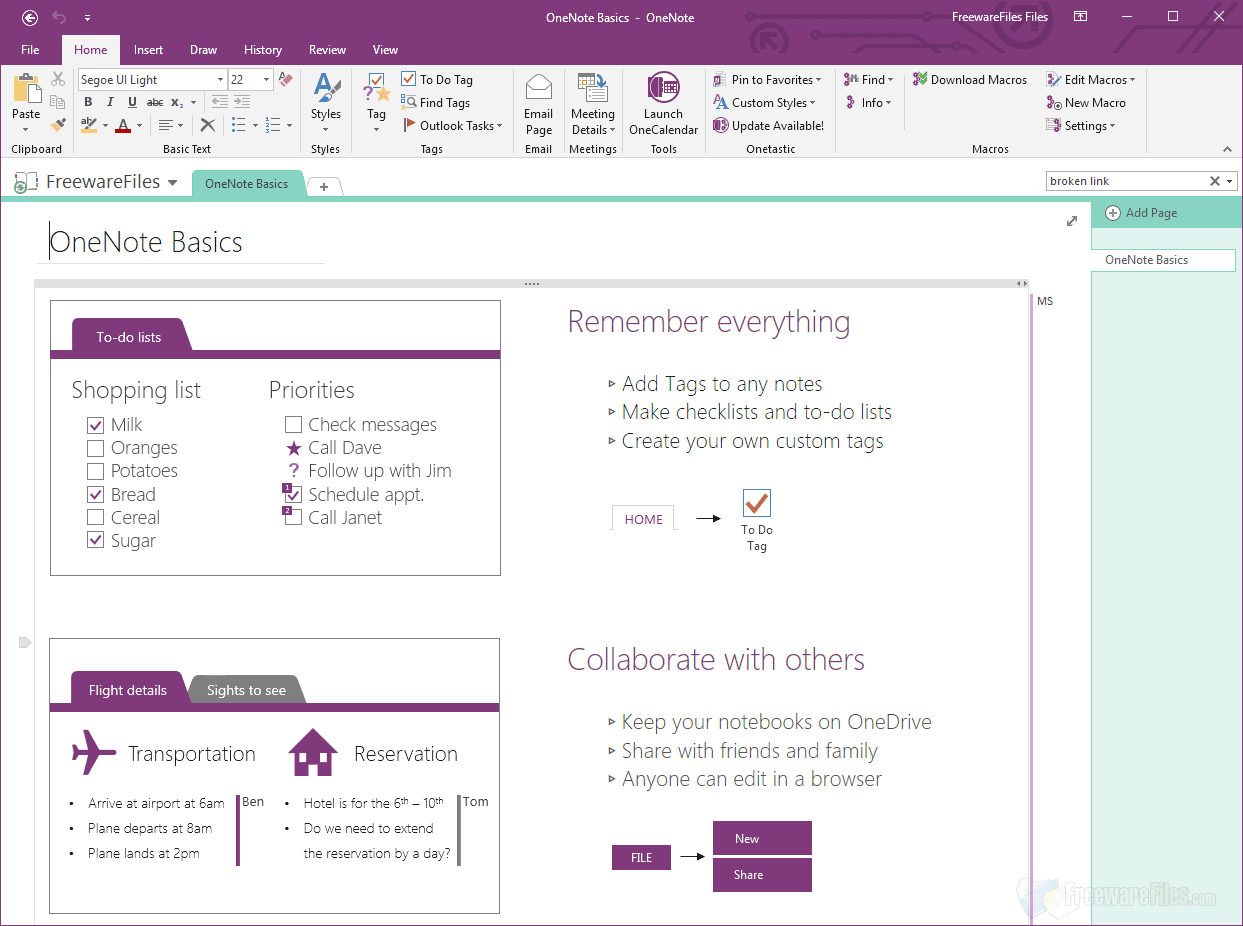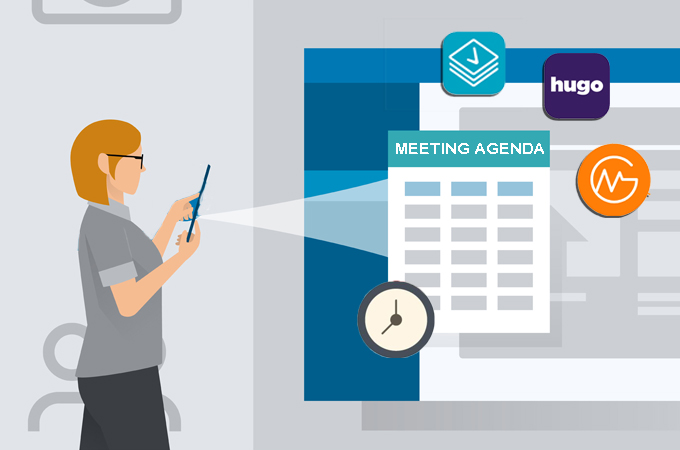- Best Microsoft App For Meeting Notes
- Best Microsoft Teams App For Meeting Notes
- Best App For Meeting Notes Ipad
- Best App For Meeting Notes
- Best App For Meeting Notes On Computer
Jun 14, 2021 The SoapBox app helps you build a habit of running high-efficiency meetings where you and your colleagues can have meaningful conversations. It’s made out of the idea that the best collaboration happens when everyone interacts in the same place. The main purpose of this app is to remove any meeting roadblocks that make meetings time killers.
While I think there are plenty of meetings that anyone could sum up in an email, it’s important to meet with your coworkers or other persons of interest when subjects require a more personal touch.
For instance, if I need answer to a few questions about a project, chances are I don’t need to organize a whole meeting to get those answers—I can just chat, email, or speak with my colleagues. Then again, discussing the strategic future of that project with my higher ups would require a meeting due to the long email thread that would ensue otherwise.
Coordinating meetings is fairly easy with today’s event planning software, whether you are all local or spread out on different continents. With software you can avoid confusing about times, dates, and locations of meetings, as well as the subject matter of the meetings themselves. Without software, you will have to rely on their memory, which isn’t all that reliable since we remember 10% of what we read and 20% of what we here.

You and your team can use these meeting tools to access to all of the information they will need to guarantee an effective meeting where everyone takes something with them
Affordable and free meeting software
Taking notes with pen and paper works just fine for some, but if you have a smartphone or tablet, using an app designed for note-taking can truly change the way you get things done. Whether your note-taking style demands minimal design and slick gesture-based functions, or advanced organization and cataloging of various media, chances are there. Aug 17, 2018 The transcribing app can be an invaluable tool, especially if you're a student or are in a profession that relies on audio journals or interviews. These apps can convert important recordings like lectures and meetings into text for you to carefully read through to better comprehend.
In order to streamline your meetings, I’ve compiled a list of nine meeting software options that range from meeting planning all the way to execution and everything in between.
Apps were chosen based on the length of the features list, mobile capabilities, their ease of use, their integration capabilities, and their prices.
Price thresholds for apps had to be fulfill at least one of these criteria:
- Free
- At least one “per month per user” tier not exceeding $15
- One tier with a monthly fee amounting to no more than $1,000 per year.
These apps are listed in alphabetical order under each section:
- Scheduling and planning software
- Note-taking software
- Video conferencing software
These three sections were chosen in order to lay out what you will need to prepare and execute an effective meeting.
Scheduling and planning software
1. Google Calendar
Google Calendar is completely free unless you are looking for extra cloud and email storage for large businesses looking to brand and centralize their operations on Google. Luckily this isn’t an issue if you don’t require all of the extra bandwidth of the paid Business edition.
Google Calendar is a customizable and social scheduling tool. Not only can you send meeting invites to participants, but you can also add in locations, color codes for meetings, and schedule reminders for the meeting. Other features include email invites, calendar sharing, and note taking abilities in Google Docs. More on that later.
Google Calendar is available on any major web browser and syncs with your native mobile calendar apps for Android, iOS, and Blackberry.
Looking for solutions with comparable features? Start with these Google Calendar alternatives.
2. GoToMeeting
GoToMeeting is the final app on my list. GoToMeeting includes all necessary meeting features, including scheduling, video conferencing, note taking, meeting recording, note taking, and presentation features (documents, spreadsheets, and slideshows).
This convenience does come at a price. GoToMeeting doesn’t charge per user like some of the apps on this list, but rather charges a flat monthly fee based on the tier that you choose.
The Starter version includes basic features such as HD video conferencing, screen sharing, and audio dial in for ten participants at $19 per month. Pro takes it even further for $29 per month, including all Starter features as well as drawing tools, recording, mobile apps, and personal online meeting rooms for up to fifty participants. Finally, the Plus tier offers everything listed above as well as an active participant directory for one hundred participants at $49 per month.
GoToMeetings also offers a free meeting planning app that give you screen sharing capabilities and audio conferencing for up to three participants at a time.
Need to find software solutions with similar features? These GoToMeeting alternatives could be what you are looking for.
3. Calendly
Calendly is a meeting scheduling tool that will help you skip the “back-and-forth emails.”
This tool integrates with most calendar programs, including Google Calendar, Outlook, and iCloud calendar. What sets this app apart from standard scheduling on calendar apps are the smart features which detect timezone differences, set buffer times between meetings to prevent overlap, and limit the number of meetings scheduled in a day.
This program is also versatile in its integration with other existing apps, such as Salesforce, GoToMeeting, Zapier, Slack, and MailChimp.
Calendly offers a free option as well as two paid upgrades. The free tier offers all basic features listed above but lacks the customization in branding, metrics and reporting, and the outside app integrations with exception of calendar apps.
Their Premium ($8 per month per user) and Pro ($12 per month per user) tiers offer all listed features, but Pro lacks the Salesforce integration and support that the Premium version offers.
If you want to explore products with similar features, these Calendly alternatives are a great starting point.
Note-taking software
Evernote is a collaborative note-taking app, which is perfect for meetings. Users are able to copy down important information during meetings, while observers have the ability to comment and discuss notes in real-time.
In addition to note taking, Evernote also includes to-do list features, image embedding, web page clipping, and saving emails directly into your notes.
Evernote is available for free with all the basic features listed above but that lack of a price tag comes with an upload limit of 60 MB.
The other two tiers (Plus: at $34.99 per year and Premium at $69.99 per year) offer all of the base features as well as higher upload limits, customer support, history browsing, PDF and Word integration, and notes presentations. They also have mobile apps for iOS, Android, and Windows phones.
Want to find software solutions with comparable features? These Evernote alternatives might be what you are looking for.
2. Google Docs
It helps to have a seamless system that comes with using apps all from the same provider. There are no compatibility issues. That is why I personally use Google Docs for most of my note taking.
When I was training to become a tech specialist for Apple, I was furiously taking notes while in training, while adding visuals and other aids into the text by using the app’s search capabilities. It helps to have the world’s largest search engine as your notes app.
Google Docs isn’t just note taking software. It is a full-blown word processor, but the social features that come with using Google Suite apps makes it a comparable alternative to traditional note taking programs, like Evernote. The best part about Google Docs is the free price tag so long as you don’t need tons of space for thousands of documents or large files.
However, if your meetings use lots of large presentations and videos which require lots of storage, a paid account is the better way to go.
It also helps that this app is just as easy to use in mobile app format on iOS and Android.

Want to explore software solutions with similar features? These Google Docs alternatives are a good place to start.
3. Zoho Notebook
Zoho Notebook is a unique note-taking app.
It was built specifically for Android and iOS mobile phones (although they have released a desktop version for Mac). Zoho Notebook not only takes notes, but also has pre-formatted cards for to-do lists and even has a cool audio notes feature. This feature is perfect for planning and conducting meetings when your hands may be tied up with other tasks.
Zoho Notebook organizes all of your notes into note card stacks based on custom subjects and themes. This makes finding notes for specific meetings that much easier to find, rather than long document lists.
The best part about Zoho Notebook is its free price tag on the Android, iOS, Windows, and Mac app stores.
Interested in products with similar features? These Zoho Notebook alternatives could be what you are looking for.
4. Todoist
This free meeting software is a personal favorite app of mine.
As someone who has trouble staying organized, whether I’m in a meeting or at my desk, Todoist has been a huge help for me (and for other people at Capterra too!). This app is perfect for keeping meetings organized as well as itemizing actionable information after a specific meeting.
With ToDoist you can set reminders and schedule out tasks to be done before, during, and after meetings so that you never miss any important requests. I use Todoist to schedule any tasks my editor gives me in meetings as well as personal projects that I want to complete in a timely manner and that extra reminder makes all the difference.
My favorite feature of this app is how easy it is to use on mobile. Everything I do on my desktop is automatically reflected on my smartphone via the cloud. This makes setting tasks on the go very convenient, especially if I don’t have access to my computer at the time.
Todoist has three tiers: free, premium, and business.
I use the free option, which allows me to schedule tasks, track completion, prioritize tasks, and set reminders. However, there is a limit. The free option only allows to you to schedule eighty projects at one time and invite only five people per project.
The next tier, Todoist Premium, is also geared more towards individuals rather than entire teams, but increases the active project limit to two hundred and the people per project to twenty five. Some additional benefits to premium include location-based reminders, automatic backups of your to-do list, and file uploads. All of this is available for $28.99 a year.
Finally, Todoist Business is made for a team, which means all of the available features of Premium are expanded along with some different features. Todoist keeps the active project limit at two hundred, but bumps up the people per project to fifty.
The Business tier also includes team management, invoices, priority software support, and log-in tracking. This option is more suited for large teams while smaller teams of ten or fifteen or less can get away with using the Premium option. Todoist Business is priced at $28.99 per user per year.
Todoist is available on Windows, Mac, Android, and iOS.
Want to find products with similar features? These Todoist alternatives are a good place to start.
Video conferencing software
1. Google Hangouts
Google Hangouts is the last of the Google Suite products on this list. The best part about using Google Hangouts is its stability. Due to its 99% uptime, you will rarely, if ever, have to worry about lack of access to their software. Google Hangouts Meet includes your standard group video chat features, such as live chatting and file transfers, but also includes document and spreadsheets presentations.
Google Hangouts doesn’t have a free option, unlike their other Suite products. Their basic option for Hangouts Meet starts at $5 per user per month. At this price point, users get 30 GB of cloud storage, security and administration controls, and 24/7 support.
The Business tier includes all of these features but increases your cloud storage to unlimited and adds on archiving features, user activity reports, and integration into email programs such as Outlook.
Best Microsoft App For Meeting Notes
Looking for solutions with comparable features? These Google Hangouts alternatives might be what you need.
2. Skype for Business
Skype is the biggest name in video chat apps, largely because of their product quality (though it is worth looking at Skype alternatives too).
Skype is free for individual users and if your meetings consist of you and just one other client or coworker, then there is no need to upgrade. However, once your video meetings cross the threshold into group meetings, you will have to upgrade to Skype for Business.
Since Skype for Business is owned by Microsoft, it offers the solution bundled with all Office 365 apps, such as Word, Excel, and PowerPoint. These tools are also helpful when conducting meetings as visual aids via screenshare.
The most impressive feature of Skype for Business is the “Meetings Broadcast” feature, which allows for mass online gatherings for up to ten thousand people. That means this meeting software is not only an effective video meeting tool, but also has the potential to double as an event broadcasting app.
Pricing is based on Office 365 rates, which include: Online Plan 2 (just the Skype for Business app) for $5.50/per user/month with annual commitment, Office 365 Business Essentials (Skype for Business plus online versions of Office apps) for $5 per user per month with annual commitment, and Office 365 Business Premium (Skype for Business and all Office applications) for $12.50 per user per month.
Skype for Business is available for Windows, Mac, iOS, Android, Blackberry, and Windows phones.
3. Slack
Best Microsoft Teams App For Meeting Notes
Slack is a powerful chat tool that does more than just send messages. Slack’s organizational system allows you to create separate groups meant for specific tasks and teams. These groups are perfect for either planning meetings with coworkers or hosting chat sessions during a video conference.
Slack has three pricing tiers. The first is their option for teams new to Slack, which they offer for free. They will archive up to ten thousand messages under the free plan and offer video/voice calls for one-on-one use.
Their next option is the Standard tier at $6 per month per active user. this plan comes with an unlimited archive, unlimited app integration, and group video and voice calls.
The last plan, Plus, offers everything in the Standard plan along with 24/7 software support, 20 GB file storage per team member, 99% guaranteed up time, and complete message archive exporting. Plus costs $12.50 per month per user.
Best App For Meeting Notes Ipad

Slack is available for Windows, Mac, Android, and iOS.
Curious about similar software? Check out these Slack alternatives for products with comparable features.
Other meeting planning and event management resources
Not only does Capterra provide you with recommended software lists, but we also provide plenty of actionable content for meeting and event planning on our event management blog. Here are a few other resources that will help you with both:
Are there any other meeting planning apps you feel should’ve made this list? Or should be removed?
Best App For Meeting Notes
What is the most important aspect of meeting planning? Are there any secrets to meeting planning that are consistently missed? Let me know your thoughts in the comment section below!
Best App For Meeting Notes On Computer
Looking for Event Management software? Check out Capterra's list of the best Event Management software solutions.